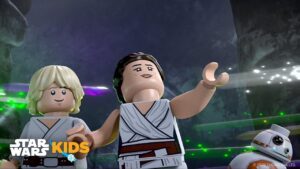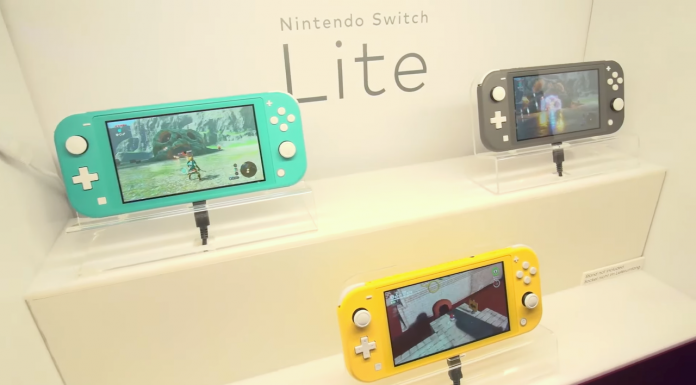The Legend of Zelda: Tears of the Kingdom launched to immense praise from critics and players alike. IGN scored the sequel to Breath of the Wild a 10, stating “The Legend of Zelda: Tears of the Kingdom is an unfathomable follow-up, expanding a world that already felt full beyond expectation and raising the bar ever higher into the clouds.” It’s a title that will be discussed and played for months after its initial release. Yet, with its support comes the cyclical arguments that Nintendo is leaving disabled players behind.
With every successful game comes warranted criticism from disabled individuals examining its accessibility. These discussions almost always scrutinize the options, or lack thereof, available within menus. Can subtitles be adjusted? Is there an option to turn off quick–timed–events? Are there aural indicators for blind/low vision individuals? Questions posed by disabled players come from a place of necessity. Without these tools, many of us can’t play critically acclaimed games. However, conversations about Nintendo and their accessibility efforts fail to explore a facet that Nintendo games have incorporated for generations – family design practices.
What Tears of the Kingdom Gets Wrong
If I’m going to argue for Nintendo and Tears of the Kingdom, I need to first acknowledge the Bokoblin in the room – the accessibility options with this game are sorely lacking. You cannot map buttons within the game directly, a crucial feature for any physically disabled player like myself. This is especially problematic with the strange and often uncomfortable control scheme that requires people to hold odd combinations of buttons, forcing them to warp their hands into claw-like shapes. Couple that with no toggles for important actions like switching weapons or fusing objects to arrows, and energy levels are quickly depleted. There are no blind/low vision accessibility settings like screen readers or navigational assistance especially in dark areas like The Depths. And for deaf and hard of hearing players, there are none of the usual settings players may expect to find, such as subtitle presentation adjustments, audio sliders, or mono support.
“
Even players with varying cognitive disabilities may struggle to play due to the sheer size of the sky islands, Hyrule, and The Depths. Not only are these areas entirely unique to each other, they also include new items that players must incorporate into their inventories. Further, weapon durability – an often-precarious topic that rivals discussions about difficulty modes – cannot be turned off under any circumstance, though fusing does increase each use. From an options analysis, Tears of the Kingdom is an absolute and complete failure, a stark contrast to most AAA games released in the past year. But as I’ve discussed before in previous articles, options alone do not make an accessible game.
What Tears of the Kingdom Gets Right
For all its failures, Tears of the Kingdom is an excellent demonstration when exploring the benefits of accessible design. While the barriers faced by disabled players will undoubtedly cause immense frustration and fatigue, Link’s adventures in Hyrule aren’t totally unplayable.
Physically disabled players can enjoy simplistic combat scenarios, as many encounters can be resolved with just the ‘Y’ button, albeit with good armor and high damaging weapons. Even with Ultra Hand, a core mechanic of this entry, individuals can build designs that automatically eliminate targets. And if the resources are available, players can save their creations and quickly construct them with the press of a button.
Many combat encounters can be tackled with the press of a single button, thanks to stronger fused weapons.
Deaf and hard of hearing players have access to fantastic subtitled dialogue, with particular emphasis on important points and people of interest. Further, the game actively visualizes enemy attack patterns, important locations, and objects, providing necessary information to the individual. And even with specific audio-based quests, the game actively guides people toward the objective with contextual clues and enclosed spaces. As for blind/low vision players, they have access to auto-pathing on horseback, and a plethora of audio indicators for low health, destroyed weapons, and even defeated enemies. All these tools are inherently layered into the design of the game, not within a menu labeled accessibility.
These design practices do not fix the glaring issues that continue to plague this game. Tears of the Kingdom can and should be criticized for its lack of accessibility care and detail. Yet, it’s unfair to automatically write off the entire experience as inaccessible without understanding the primary selling point of Nintendo games. Despite the overall size and relatively in-depth plot of Tears of the Kingdom, these games are meant to be played by everyone. From seasoned fans to newcomers to gaming alike, the simplistic nature of Nintendo and subsequently Zelda titles can appeal to a vast array of people, including disabled individuals.
Individualistic Experiences
I firmly believe no studio or publisher can be labeled as “The Worst” when discussing accessibility from a general sense. The individualistic nature of the disabled experience means any game or system is playable, and by making absolute statements, we are actively erasing the real and valid feelings of those who can play these franchises. That’s not to say you can’t be upset with the lack of accessibility, but there are other AAA games that have done far worse even with the inclusion of an accessibility menu, like the initial release of Gotham Knights.
“
After reading this you may be wondering if I can even play Tears of the Kingdom, and the unfortunate truth is I can’t, at least fully. I have not played a Zelda game since Breath of the Wild released in 2017. In fact, my frustration with that game led me to become a journalist focusing on accessibility. And as I’ve learned about the intricacies of accessible game design and the disabled perspective, I realized I was allowed to feel angry, but not discredit those who could enjoy Link’s adventures. Throughout my career, which earnestly began in 2019, I’ve interviewed disabled players who can only play the Nintendo Switch, and others who have never had the capability to play games with award-winning accessibility. It doesn’t mean those titles are failures, but that no disabled experience is the same.
Tears of the Kingdom is an absolute success for Nintendo, but it’s one rife with legitimate questions about its future, specifically for accessibility. And as publications, content creators, and fans continue to share their excitement, it’s understandable that many disabled players feel left out of conversations. But for those disabled individuals who can enjoy the game, it’s proof that accessibility is not one-dimensional, and there is still so much more the industry needs to learn.
Grant Stoner is a disabled journalist covering accessibility and the disabled perspective in video games. When not writing, he is usually screaming about Pokémon or his cat, Goomba on Twitter.
























